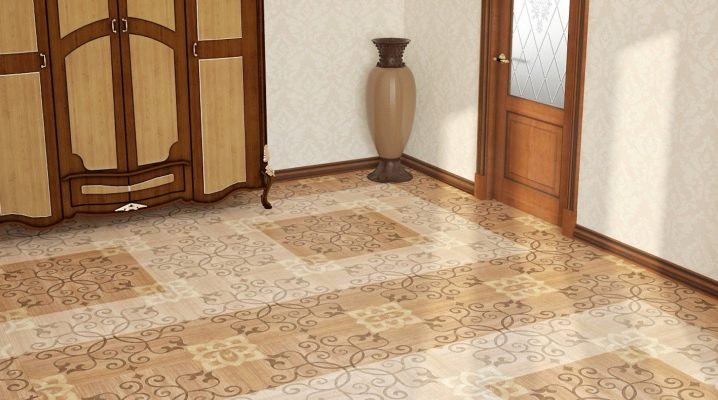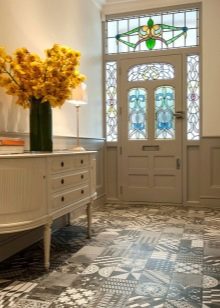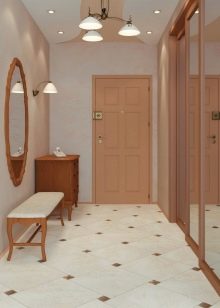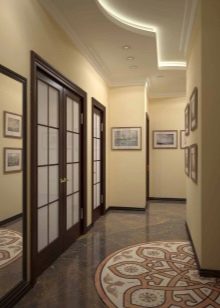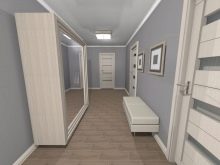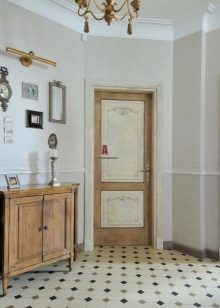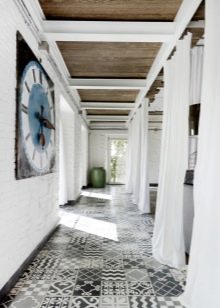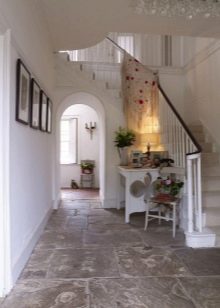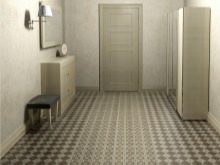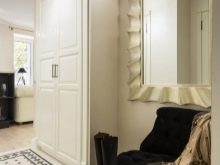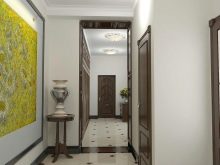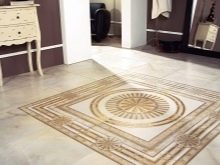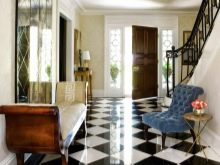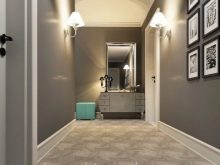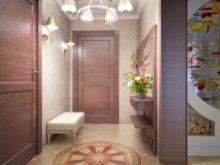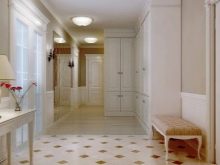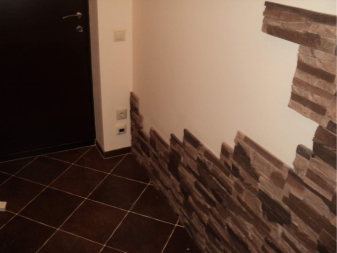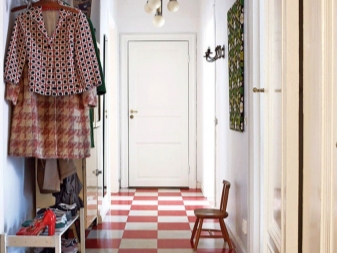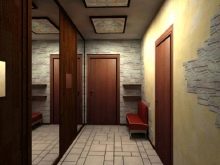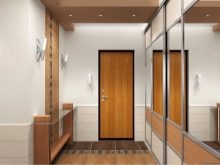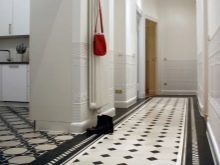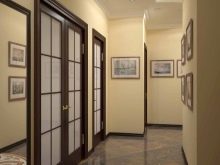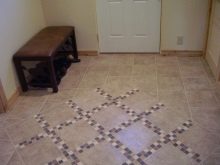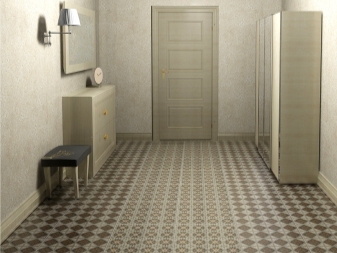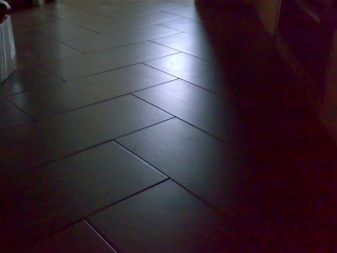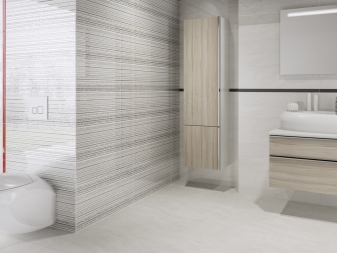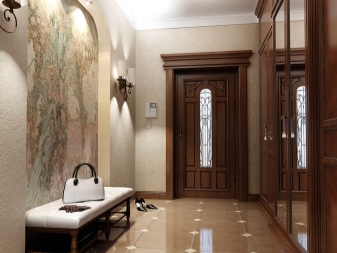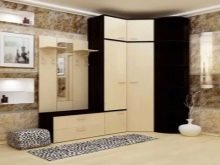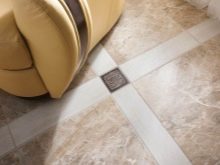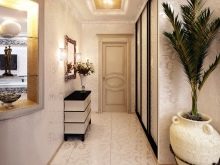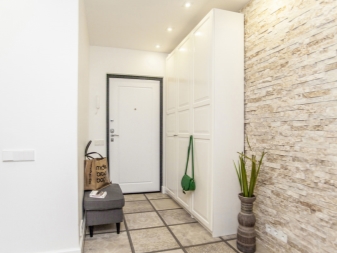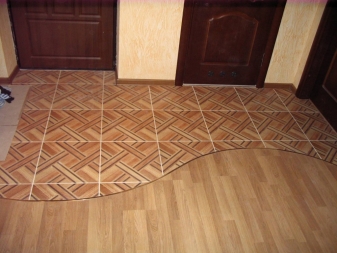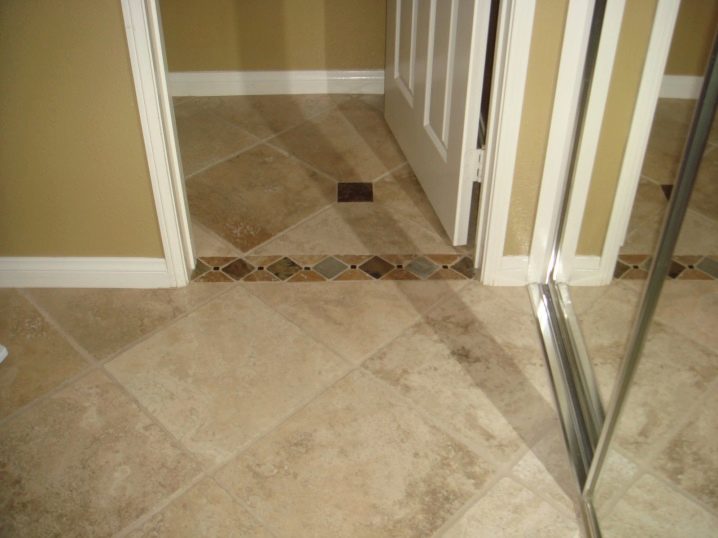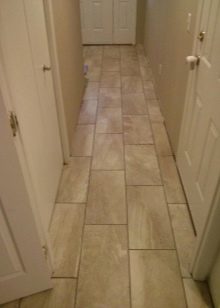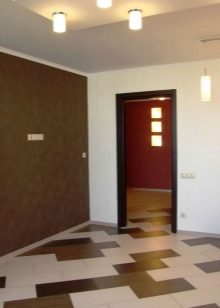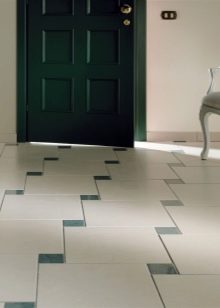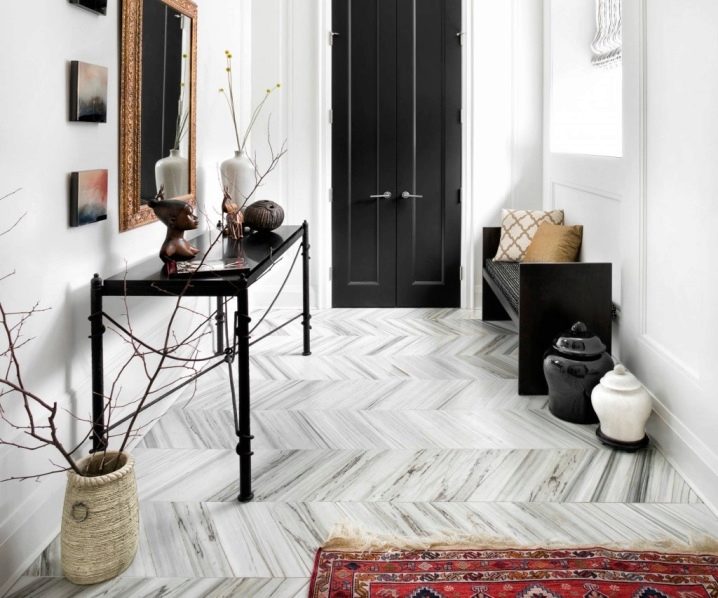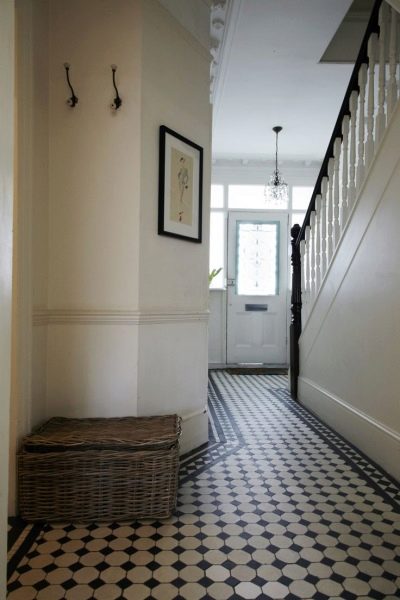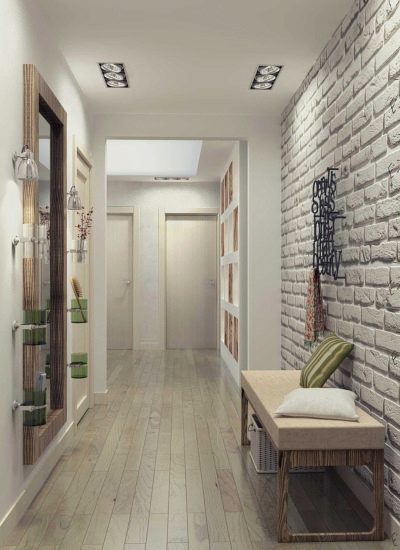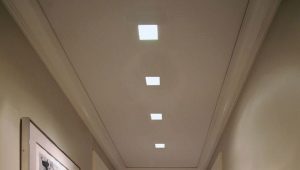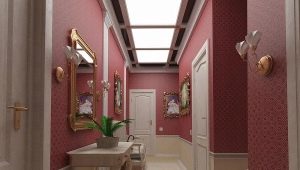How to choose a tile for the corridor?
Thinking about repairing an apartment, the owners often move to the design of the hallway last. Such an approach is not the best option, because with the appearance of the corridor there is a first impression of a dwelling for anyone who comes to your house.
Rational, thoughtful and creative approach to the design of the corridor will allow you to successfully fit it into the overall design project of the dwelling and pick up materials that will not only please the guests and residents, but also last a long time, preserving the original aesthetic and performance characteristics. An excellent choice for the corridor will be tile.
Features
The choice of finishing materials for the repair of the hallway should be particularly responsible. The floor in this room will be constantly exposed to various additional factors that are absent in any other room.The corridor regularly receives an increased amount of dust and dirt from the street, and in the winter season also chemical aggressive substances that process roads and pavements in ice.
When the entrance door is opened, there is a sharp temperature difference, in addition, the shoes themselves, especially heels, regularly have a noticeable mechanical effect on the floor covering. Heavy and bulky items and purchases are periodically moved through the hallway, water is poured onto the floor from umbrellas and raincoats, snow is being showered from outdoor clothing, boots or pram wheels.
More recently, the tile on the floor in the corridor seemed something boring and impersonal, but the modern choice of colors, prints and ready-made interior solutions will not leave indifferent any sophisticated buyer. Properly selected tiles will look great in the hallway, emphasizing the advantages of the room and the good taste of the owner and designer. It is important to know what you should pay attention to when selecting a tile and caring for the flooring, so that the repair is not only beautiful, but also of high quality and durable.
Kinds
Tile, selected for facing the floor in the hallway, differs primarily in the material of manufacture and method of execution. Ceramic tile is a product made of high temperature treated clay. It is divided according to the methods of this treatment into a glazed, rustic (that is, characterized by a heterogeneous surface), porous.
Previously, the tile was fired twice - to give the desired shape to the workpiece and after applying the glaze to fix. Such manufacturing techniques led to increased porosity of the resulting product in combination with low flexural strength and had real positive feedback.
In the modern market, the types of single-fired ceramic tiles, first made using special molding and pressing, and then, after glazing, once burned, have gained popularity. This method of manufacture can reduce the porosity of the tile to 3%. The thickness of such a tile is obtained up to 13 mm, which is approximately twice the thickness of double fired products. Wall tiles made in this way are durable enough.
Thus, in modern building supermarkets you can find tiles mainly of the following versions:
- single firing without glaze (granite);
- with single firing after glazing;
- Double fired glazed model.
Porcelain tile without glaze has a very high strength and wear resistance, but due to the increased surface roughness to improve operating conditions, it is covered with a special composition.
Shape and size
In addition to the characteristics of the composition and methods of manufacturing tile for the hallway varies in size, shape and color. Square and rectangular tiles are more familiar to buyers, but modern manufacturers also offer shaped and polygonal options.
A large tile will visually expand the entrance room, which is especially important in old houses of Khrushchev's construction with small and narrow corridors. But it must be remembered that the larger the product, the more carefully you need to approach the choice of the layout scheme to avoid increased waste. The surface of the finishing material can be glossy, textured or matte.
An expensive and rarely used solution in private design projects is a natural marble tile - a rough cut-off slab model, or a smooth, polished, very attractive, but rather slippery.
Colour
Actually, the shade of the floor tile must be selected on the basis of the color tables, planning the entire color scheme of the room in a complex, so that the corridor looks harmonious. For the hallways, a variant of dark-colored ceramic tiles is often chosen due to lower contamination, but it should be borne in mind that the darker the coating, the more divorces will be on it.
It makes sense to arrange such a floor in a spacious corridor and combine it with light furniture of strict forms, since the shade of the tile will actively absorb light. Bright colors of the flooring will help to visually expand the space and allow the eyes to relax, but every spot from the shoe will be noticeable to the naked eye.
A mosaic or chess combination of monochrome black and white tiles is a win-win classic that always looks great, but requires very smooth and high-quality styling, any flaws will catch the eye instantly.
Do not go out of fashion gray, brown and beige shades.When choosing a tile or porcelain tile of such a color range, you should carefully consider the choice of colors and textures of furniture and walls so that the hall looks stylish, but not boring.
An interesting solution for the designer will be the surface of the coating, texture and color imitating natural stone or natural wood. The first option is indispensable when designing a room in a classic design, and the second is ideal for creating an original rustic style.
An open type corridor, where there is always access to natural sunlight, can be arranged using more bright and colorful shades of ceramic tiles. Natural lighting will not distort the colors and the most profitable will convey the creative creative idea of the designer.
Prints
Modern leading manufacturers of ceramic tiles and porcelain tiles are often offered in the construction market ready-made design versions of the tile pattern. Such a ready-made set can be studied in the catalog and immediately purchased a set of tiles of the desired size in color-designed by the designer. In the sets can be tiles of different sizes and shapes, inlays and borders.All that remains for the owner is to figure out how this picture will fit into the dimensions of his room, and calculate the volume of purchased materials. Wallpaper must be combined with tile. This combination looks very good.
A fashionable solution is a motley spot in the center of the corridor with a monochromatic design around a color accent. Preferring this option "under the carpet", you need to remember that the rest of the interior should be calm, soft, smooth, so as not to tire the eyes of the inhabitants of the home.
Fashionable patchwork technique resembles a patchwork quilt and involves the use or combination of tiles of different ornaments or shades in a single scale. Such tiles are arranged in random order, creating a unique and inimitable pattern. Conveniently, the location of such a tile does not need to be customized according to the pattern. The variant of the coating with the "texture under the tree" can be noted the presence of the same dignity due to the imitation of the natural pattern of wood.
Popular is laying tile cover "herringbone." Such a technique is applicable to both narrow and large rectangular tiles.There are various options for "Christmas trees" - both classic and asymmetric with offset.
Laying tiles diagonally allows you to visually increase the size of the room and hide its imperfect forms.
If the owners of the apartment welcome the minimalist design, it is better to choose a tile with a monochrome surface of soothing shades. To create an ethnic style, a combination of unusual and bright ornaments will suit.
If a modern and bright interior in the hallway is supposed, the combination of large tiles and small decorative elements with a bright print in the floor covering can be a good choice. Bright original inserts can be distributed throughout the corridor or select a separate area for their location, for example, at the door or in the center.
Which one to choose?
When choosing a tile, first of all you need to understand its operational properties. The most basic is the porosity of the material from which the product is made. The higher the porosity, the more moisture the product will accumulate. Since the tile in the hallway is often exposed to water and snow from shoes and clothes, and the floor in the hallway is usually washed most often, you must choose products with minimal porosity, in private homes it is better that it was up to 3%.In an apartment building, it is allowed to use tiles with a similar indicator not exceeding 6%.
The minimum porosity has a positive effect on other properties of ceramics. First, a weakly porous tile due to the molding method has a greater thickness and better bending resistance. Secondly, its overall strength will also be higher than that of more porous products.
Pay attention to the surface of the ceramic tile. It is better to lay unglazed tiles or porcelain tiles around the door. Their surface is more rough, so the risk of slipping on the wet floor is reduced. This property of the tile characterizes the slip resistance parameter. Good characteristics of friction shows a tile with corundum coating.
It should also be borne in mind that the more pronounced the gloss of the surface of the coating, the clearer it will be noticeable scratches from sharp heels, wheels of suitcases and travel bags, walking sticks and other sources of mechanical stress. And spots and divorces are less conspicuous if there is a colorful bright pattern or an intricate ornament on the floor.
Equally important will be the information on the abrasion of the ceramic floor. This information can be found on the original packaging of the product. For corridors, hallways and similar premises it is recommended to choose tiles with a high class of abrasion - 3 or 4.
If there are many scraps outlined when laying tiles, the ultimate strength of the material will be important. High strength and surface hardness will help avoid chipping and unnecessary scrap when cutting perimeter pieces. Besides, the stronger the product, the longer it will retain the aesthetic original appearance, despite friction from furniture legs and other mechanical effects.
Naturally, the cost of the product also plays an important role for most. But do not be tempted to choose too cheap tiles, pay attention to the average price segment, so as not to risk the likelihood of re-repair.
Care Tips
Ceramic tiles - quite resistant to various influences floor covering material. But in order to preserve its beauty, texture and color for a long time, a number of recommendations should be followed.For regular cleaning should not get carried away with acid-containing cleaning agents, it is better to give preference to compositions for mild cleaning. An aggressive chemical environment can impair the glossy properties of the coating of a ceramic product, as well as destructively affect the grouting of tile joints. This is especially true with cement-based grouting.
Choose products with a liquid or gel base. Abrasive powder cleaners may leave scratches on the surface. In addition, special cleaning solutions are sold for glazed tiles, which not only do not damage the coating, but also prevent stains and stains.
Do not use metal and hard natural brushes, use only soft sponges or cloth napkins.
Beautiful examples in the interior
For the corridor you can use the combined tile. You will be able to choose the most suitable combination for you.
For a long time, chess tile has not lost its relevance. It fits into many interior styles.
You can choose a tile that mimics natural wood. The tile is much more reliable than a laminate.
On the problems when laying tiles and how to solve them, see the following video.
